Superflex Strategy - 5 Tips For Underdog Fantasy
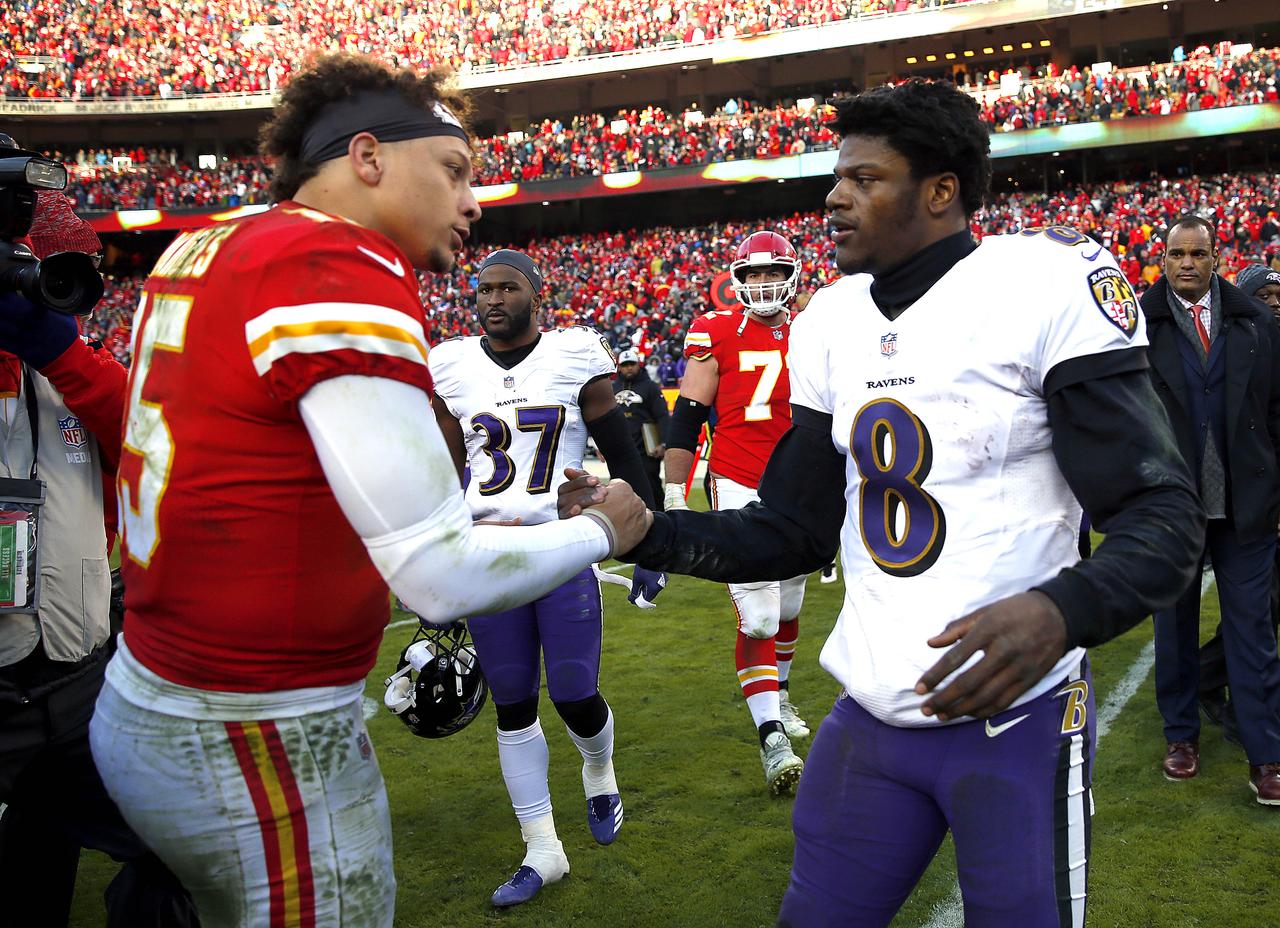
There are $300k in prizes with $50k to first place in the Underdog Fantasy lobby right now. The "Big Board But Superflex" closes the day before the 2022 NFL Draft (April 28th), so now is the time to fire with most of the free agency moves in the rear view.
It’s a great tournament to enter because it’s completely unsolved. There is no superflex data to build on, so it’s largely instinct vs. instinct. Today I’ll look at the tournament settings and play-by-play data to help find the obvious edges.
Tip #1 - Draft at least one (1) QB in the first two rounds.
The roster settings basically removed the third WR spot for this superflex roster spot (QB, RB, WR, or TE). That means QBs are worth a lot more (duh) and WRs in particular are worth less. But to what extent?
I took last year’s data to create fantasy points over superflex replacement (something I typically call better in best ball points). I found that the QB24 on a given week scored 10.4 fantasy points on average, so this metric takes all the weekly fantasy points scored above that 10.4 points to create fantasy points over superflex replacement. I replicated this for the TE12 (8.5), the RB26 (9.8), and the WR34 (9.4), the latter two representing the baseline for the flex position. Here were the 2021 results:
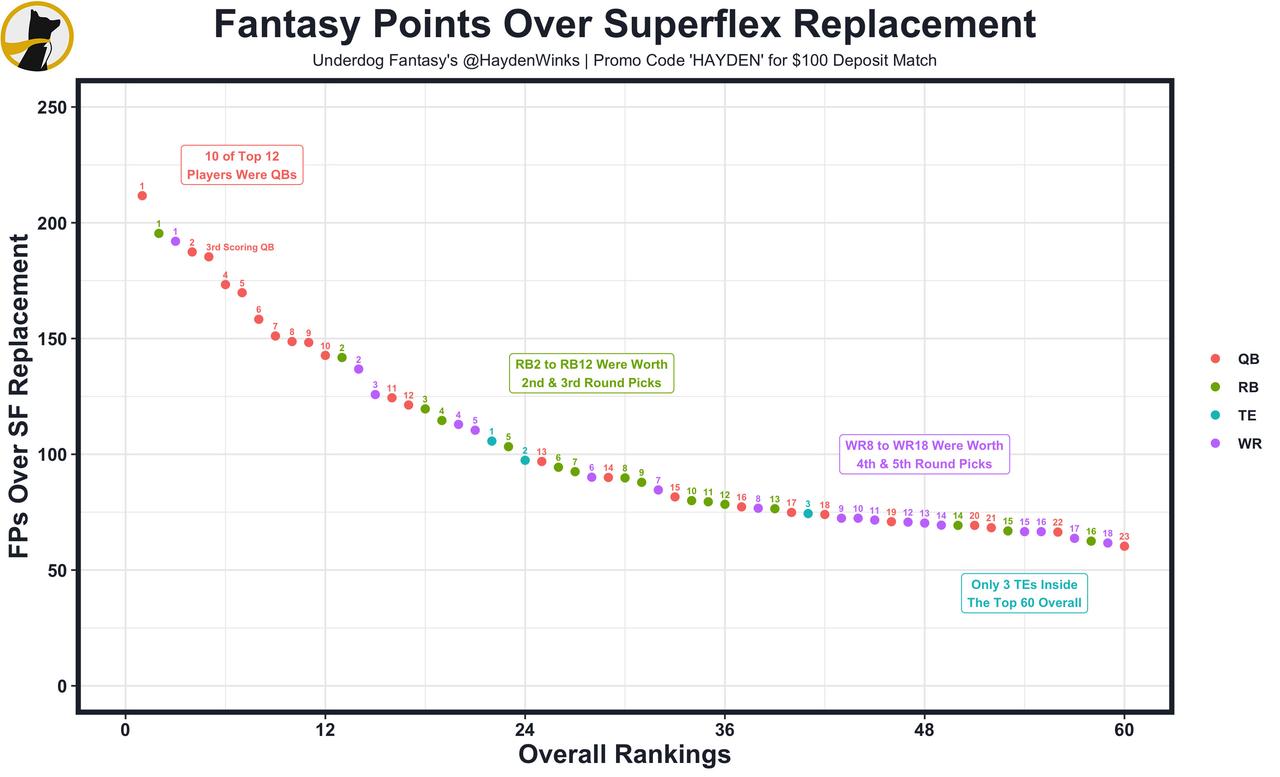
10 of the first 12 overall players last year based on Underdog Fantasy’s superflex settings were QBs. This expands to 12-of-17, too. In other words, Round 1 and Round 2 are where the stud QBs should be drafted. This is happening for the most part, as 11 of the first 17 players in current average draft position are QBs. I’d follow the crowd here.
Tip #2 - Draft WRs and RBs (not QBs) in Rounds 3-5.
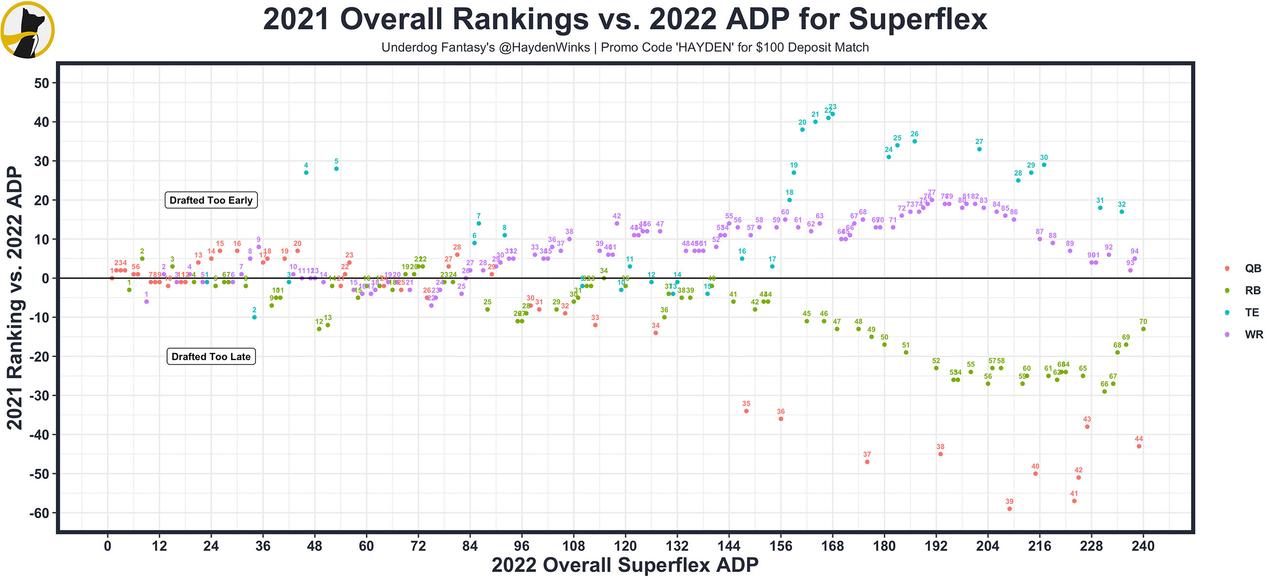
This chart compares where players finished in 2021 fantasy points over superflex replacement and where players are being drafted in 2022 ADP. The dots below the black line represent the best values. The dots above the black line represent reaches.
The QBs (red dots) being drafted between 20th and 60th overall (read: Round 3 and Round 4) are being over drafted by about 5-10 picks, likely based on user panic. Instead of doing this, we should look at the QB21 to QB34 range where the value is better throughout if we still need our QB2 and QB3.
In this 20th to 60th overall range, the best picks look to be RBs (green dots) and WRs (purple dots). The RBs in a vacuum are the best picks in Rounds 3-5, but when we factor in the values of the entire draft then the WRs make a lot of sense here too. For most of the second half of these superflex drafts, the WRs are over drafted by 10 picks, so grabbing one or two WRs in this Round 3-5 range is advisable while the price is fair.
Tip #3 - Assume your starting lineup will have 2 QBs, 2 RBs, 3 WRs, and 1 TE.
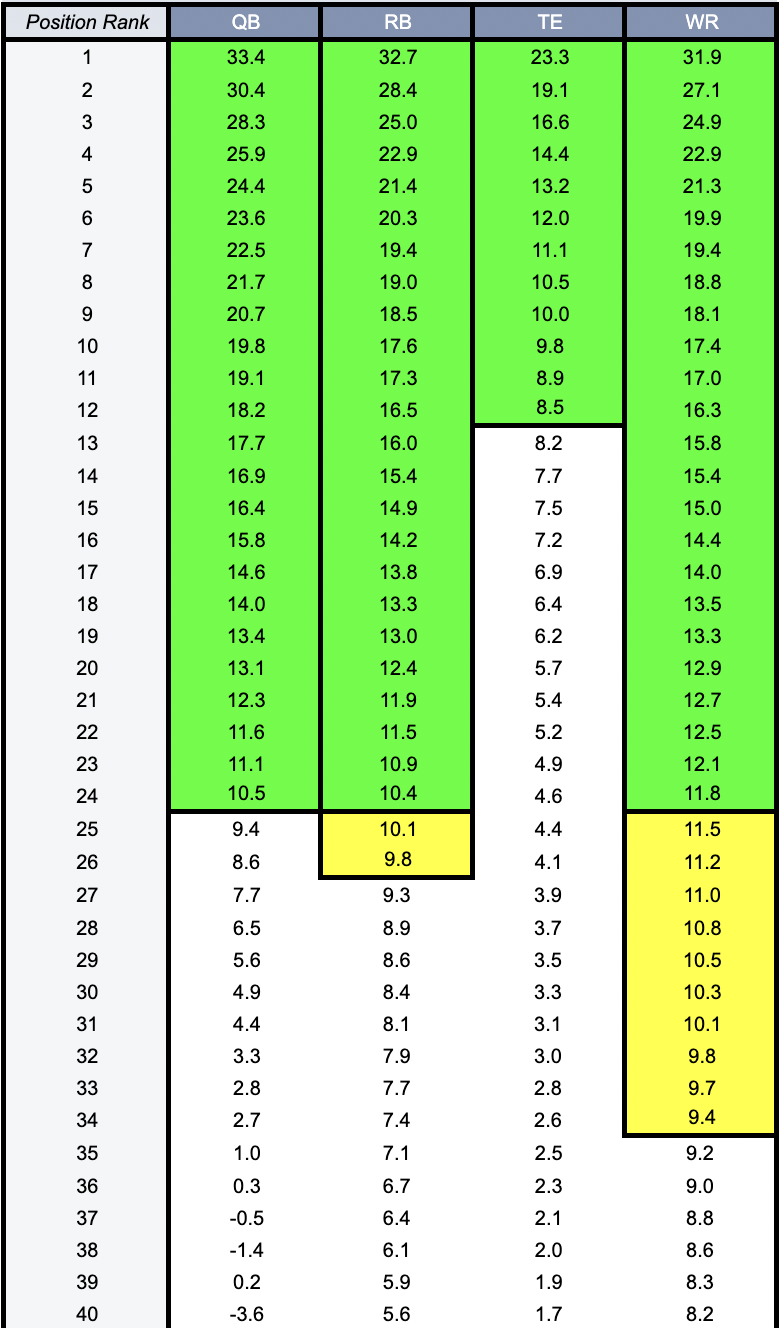
This table shows how many points each position scored on average each week last year by position rank. Based on Underdog Fantasy superflex settings, the green boxes are the ones that are sure-fire starters based on the average team and the yellow boxes are the ones likely starting in the regular flex spot.
The WR25 to WR34 range typically outscores the RB25 to RB34 range, meaning that we should assume in most builds that our third-drafted WR will be in the starting lineup ahead of our third-drafted RB. With this, I think it’s fair to use a 3:2 WR:RB ratio for most of the draft.
As for the superflex spot, the QB24 outscored the max of the RB27, the TE13, and the WR35 in 11-of-17 weeks. We’ll be starting a quarterback in the superflex spot in about 66% of our weeks depending on our build.
Tip #4 - Have a decent third QB for bye weeks and stacking.
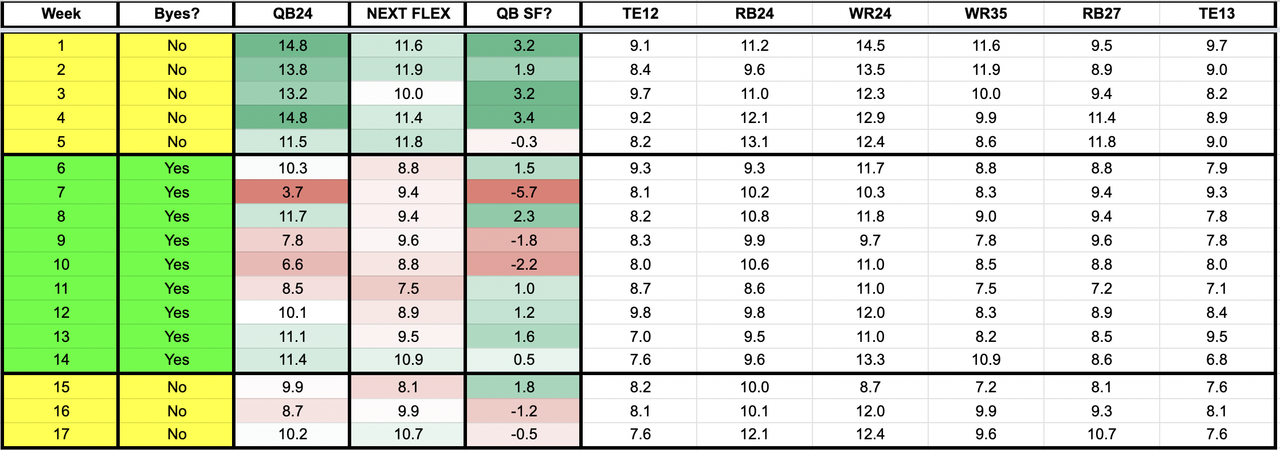
The bye weeks are going to impact superflex scoring more than the normal flex spot because of a lack of supply at quarterback. The QB24 scored 3.1 fewer points during the bye weeks than they did in the non-bye weeks, while the “next flex” (the max of the TE13, the WR35, and the RB27) scored 1.5 fewer points during the bye weeks. It’s simply easier to find a spiked-week receiver than it is to start the worst starting quarterback of the week, so we will have our WRs and RBs sliding into the superflex spot during the bye week stretch.
For this reason, the QB3 spot is pretty important. Not only are we going to even out our bye week scoring (where the QB3 will practically be guaranteed two startable weeks), but this QB3 will also be out-scoring our QB1 and QB2 on occasion even in the non-bye weeks due to weekly variance and injuries.
If we wait on our QB2 like suggested in Tip #2, we should be pretty quick to double-tap our QB2 and QB3 in the Round 6-8 range. If we still don’t feel great about our QBs, I love going the QB4 route. Go back to the Tip #2 chart and see how discounted the QB30-QB40 range is. I like Marcus Mariota, Jimmy Garoppolo, Kenny Pickett, Drew Lock, Matt Corral, Desmond Ridder, and Jacoby Brissett in particular.
And of course, we should be stacking these QBs with their WRs and TEs for positive correlation.
Tip #5 - QB4, RB5, WR8, TE3 is the basic roster construction.
I hate viewing roster construction through the lens of the final team because the early-round journey is what actually determines the final roster construction, but the people just love a basic blueprint. And I'm a man of the people.
RBs are easy. If we have really good backs, then four is viable. If we have really bad backs, then six is viable. Otherwise, five RBs for two RBs spots will work most weeks.
WRs are also easy. If we have really good receivers, then seven is viable. If we have really bad receivers, then going to nine (maybe 10) receivers works. Having 7-9 WRs for three WR spots is the sweet spot.
Having three QBs is viable if the QBs in general are strong. For example, if you picked Dak Prescott and Matthew Stafford at the Round 1/2 turn. But in general, those late-round QB4s are worthwhile picks because it’s four QBs going into two QB spots most weeks.
TEs are where I want to be underweight. Only 3 of the top-60 players in fantasy points over superflex replacement were TEs last season, a finding that was similar to what I found in QBs Are Undervalued On Underdog Fantasy. They simply don’t score that many points in half PPR, especially so when we have turned the 3rd starting receiver spot in for a higher-scoring superflex spot. For this reason, I either want two low-end TE1/2s and log out or I want three TE2/3s. The chart in Tip #2 suggests that the TE3 range is being over drafted right now, which tells me that jamming three TEs into one tight end hole is too much.
... that’s what she said ...
General round-by-round guideline:
QB1
RB1
RB2
WR1
WR2
QB2
QB3
WR3
WR4
TE1
TE2
RB3
WR5
TE3
QB4
RB4
RB5
WR6
WR7
WR8
Tip #6 (Bonus) - Stack recent transactions.
The tournament is 50% filled right now, but we just witnessed some wild moves that changed the percentage of teams who are stacked properly. If we hit these new stacks, we are only truly competing against half of the teams who have entered solely based on timing.
Some examples would be the Chiefs (Travis Kelce, Patrick Mahomes, and JuJu Smith-Schuster sans Tyreek Hill), Dolphins (Tyreek Hill at a cheaper cost, Jaylen Waddle at a cheaper cost, and Tua Tagovailoa), and Colts (Michael Pittman and Matt Ryan). Whenever the next big trade happens, target that stack at a reasonable price, too.